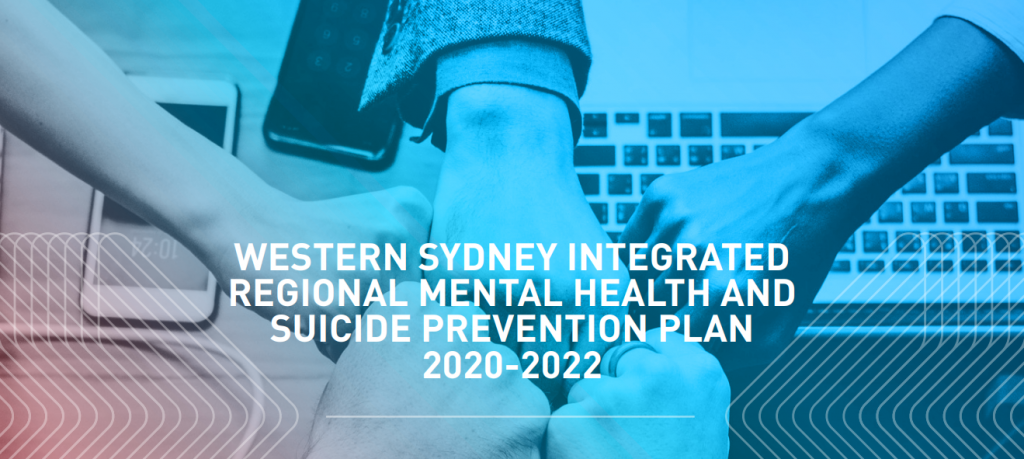
What is the current state of mental health in Australia?
The 2018 National Health Survey estimated that one in five Australians suffered from a mental or behavioural condition. This does not account for the effects of COVID-19 on the mental health of the population. headspace studies are already highlighting the impact of the pandemic on our youth, with 74% of 12-25-year-olds reporting worsened mental health since the start of the outbreak1.
Take Action Against Mental Health
On the 9 September, the Western Sydney Primary Health Network and the Western Sydney Local Health District will be launching the Western Sydney Integrated Regional Mental Health and Suicide Prevention Plan. The Plan will be launched by the WSLHD Chief Executive, Mr Graeme Loy and WSPHN CEO, Mr Ray Messom. All health professionals and interested stakeholders are invited to attend as we commit to improving mental health services in our region.
When: Thursday 9 September 2021, 6-7pm
Where: Zoom
Further information: invitation
Registration: Eventbrite
What is the Western Sydney Integrated Regional Mental Health and Suicide Prevention Plan?
The Western Sydney Integrated Regional Mental Health and Suicide Prevention Plan responds to these mental health challenges and is led by the Western Sydney Primary Health Network and the Western Sydney Local Health District. The detailed document outlines collaborative governance, planning, commissioning, and monitoring objectives to target mental health in our region.
The new Plan takes an evidence-based approach, with feedback taken from the NSW Mental Health Commission’s 2019 mid-term review, national and state policy guidance, stakeholder consultations, population needs and services data, and examples of best practice and innovation.
Western Sydney has been commended for the positive steps to raise awareness of mental health issues, provide culturally and linguistically diverse programs, co-design with consumers, and increase community outreach and engagement. The mental health sector has also seen greater cohesion through interagency cooperation, and the early adoption of innovative technologies and practices which have improved information sharing.
Some of the remaining challenges are the visibility of services, access for young people, NDIS wait times, gaps in the workforce, and limited funding contracts.
Seven priority areas
The new Regional Mental Health and Suicide Prevention Plan identifies seven priority areas for action to combat these challenges.
- Strengthening collaborative governance and information sharing for planning, commissioning and evaluating services.
- Forging partnerships within and beyond the health and social care sectors that deliver better mental health outcomes for the Western Sydney community across the life span.
- Developing, integrating and utilising eHealth systems to improve self-directed care, connectivity and collaboration between service providers
- Improving the access to and the quality of perinatal, infant, and child mental health services
- Ensuring adolescents and young people are supported through the school years and during the transition to adulthood
- Implementing suicide and self-harm prevention and crisis interventions tailored to the needs of the community
- Attracting and retaining a committed and culturally competent and accredited workforce
Current suicide data is also at an alarming high, with seven men dying from suicide daily in Australia2, and Aboriginal and Torres Strait Islander people twice as likely to die by suicide than other Australians3. Young people are also at risk, with suicide accounting for two in five deaths among people aged 15-17 years in 20194. With the highest birth rate in NSW5, creating a significant youth demographic, and a large community of Aboriginal and Torres Strait Islander people calling Western Sydney home, our region has a huge task ahead to protect our young people and provide culturally appropriate support services.
Join us as we realign health sector priorities to deliver high-quality mental health services to the people of Western Sydney.
[1] headspace (2020) Coping with COVID: the mental health impact on young people accessing headspace services, available at: https://headspace.org.au/assets/Uploads/COVID-Client-Impact-Report-FINAL-11-8-20.pdf
[2,3,4] ABS (2020). Causes of Death, Australia, 2019: Intentional self-harm (suicide), cited in Beyond Blue, available at: https://www.beyondblue.org.au/media/statistics
[5] Secure Analytics for Population Health Research and Intelligence (SAPHaRI) (2019), NSW Perinatal Data Collection, Centre for Epidemiology and Evidence, NSW Ministry of Health, available from: http://www.healthstats.nsw.gov.au/Indicator/mab_bbth/mab_bbth_lhn_snap